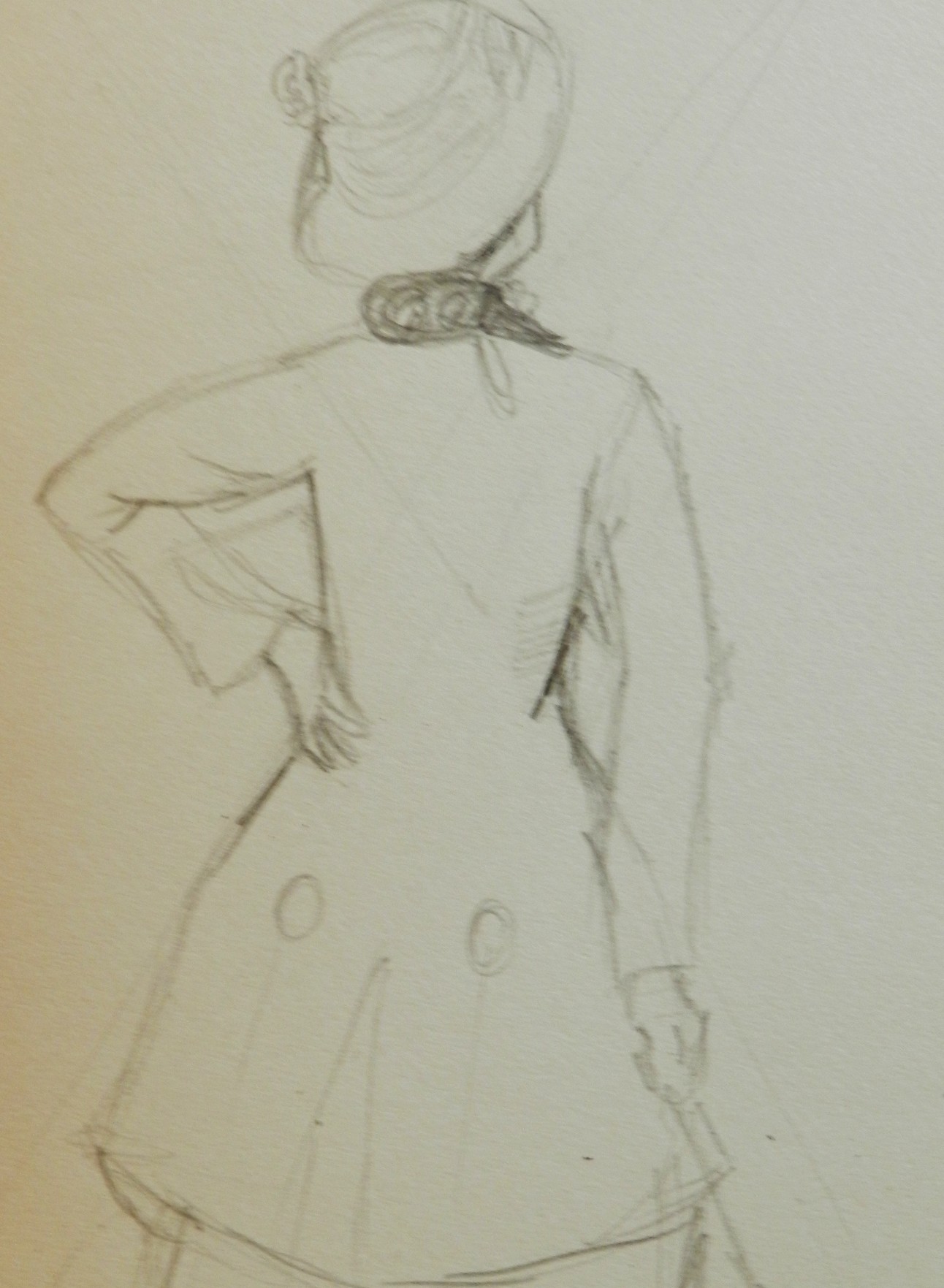What drew me into the room was the ordinariness. These paintings and drawings were not of dancing girls or opera dames or absinthe addicts. The color palettes were not of bright yellows or hypnotizing blues; there were no splashes of shocking red in a flower tucked at the waist or behind an ear. Though rich and bold in shape and shade, the artistry behind the works in this room was of a more subtle variety, and, from what I knew (or thought I knew) of Degas, out of character.
His well-known works are not quiet or muted, not usually at least. The painter thrusts you into the bustling, noisy ballet class or café, plops you down in the opera house, sends you behind the curtain where wild limbs stretch out in all directions, or transforms you into the “peeping Tom” as bathwater runs over long locks and a bare back during a morning wash. That’s signature Degas. Yet in this series – the same image, repeated over and over, from slightly different angles and in various mediums – he lets life be still for a moment, and the scene settles. I could almost see him, propped up against a marble pillar, one brow raised in interest, as he studied and sketched her. Faceless, the woman in this series of works may or may not be a beauty, but her elegance is clear. Dressed in the fashion of the day, leaning nonchalantly on her umbrella, gazing at the masterpieces on the wall before her, she is poised, practical, and frankly more interested in the treasures of the Louvre than in the fact that Edgar Degas is madly drawing her from behind: this is Mary Cassatt at the Louvre.
Seeing Degas’s renderings of Cassatt in their recent joint exhibit at the National Gallery of Art was a highlight to say the least, and my initial thoughts of “ordinariness” swiftly evaporated as I sat on a bench in the center of the small room for a few hours. Cassatt’s image danced around me in oils, pastels, engravings, and pencil sketches, and my mind was caught up in this unexpected quest to make sense of what kind of woman she was and why Degas had chosen to capture her in this way. I saw Cassatt’s own work, yes, and admired her talents as an artist, but I struggled with why this educated, wealthy, seemingly self-possessed woman (who likely preferred to be behind an easel instead of in front of it) would agree to model for Degas. The exhibit highlighted her collaboration and friendship with the French painter – a man ten years her senior, who helped shape her style and encouraged her to exhibit her work alongside the Impressionists – but it was this particular collection, set apart in its own space, where Cassatt serves as subject and Degas is not himself stylistically, that proved most illuminating.
Cassatt is a unique choice of model. She is a grown woman, fully-clothed, and – unusual for a Degas piece – standing still. I initially credited his fascination with her to his love of line – the human figure, with straight and true and graceful limbs. Cassatt’s long arms and slender waist are indeed emphasized and striking to the observer (and proved inspirational for my amateurish sketching). Yet her presence in the Louvre and her absorption in the canvases before her suggests something much more significant. Described in the exhibit brochure as “one of Degas’s most intense and sustained meditations upon a single motif,” the drawings and paintings of Cassatt elevate her to a true Muse. She stands as ART embodied – an artist in her own right, a student under the watchful eye of a master, beholder of the great works while being woven into one herself. The series is layered, reflective, mysterious, experimental, and timeless – and Mary Cassatt is at the center of it all.
To be immersed in art: that must of been her motivation to serve as model. It was not vanity, or doing a favor for a friend, or simple indifference that would have moved her to let herself be immortalized this way. I like to think that she agreed to take part in a celebration of her craft, to be involved in the creation of something beautiful. We have so many opportunities to do this as writers and artists, but it calls for some courage to collaborate, experiment, and – when the occasion arises – serve as Muse. We must seize those chances – even if it means letting Degas share your figure with the world.
(Sketch by Lindsey Grudnicki)



